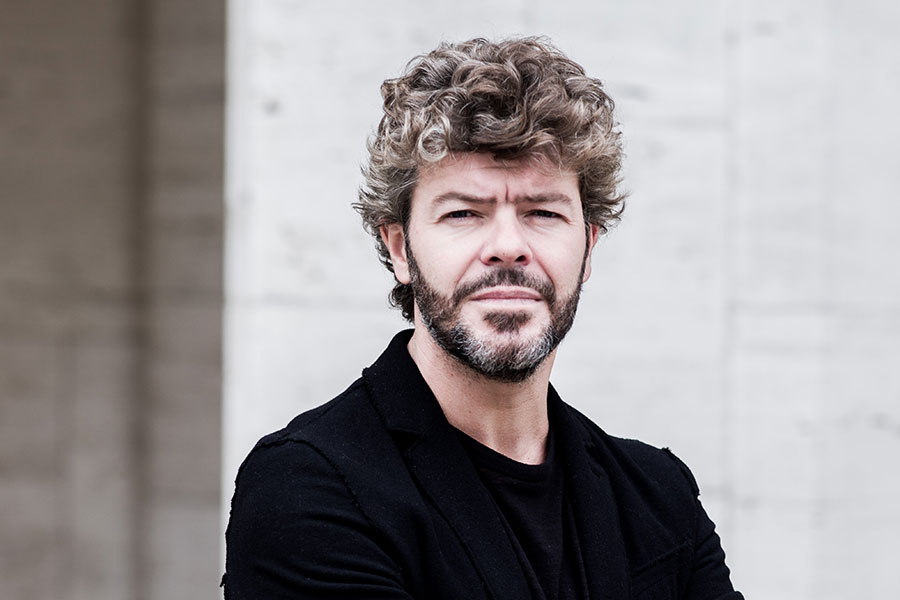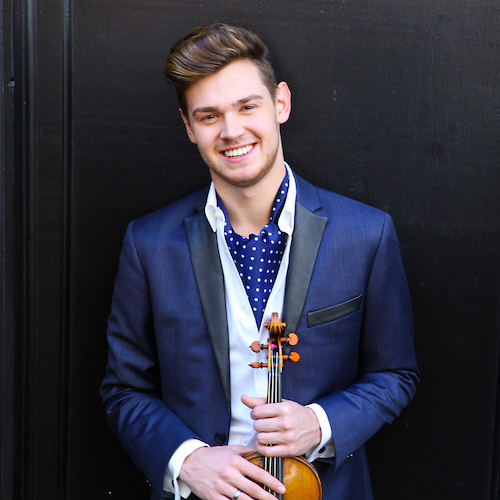Worlds collide compellingly with Heras-Casado and DSO

Pablo Heras-Casado conducted the Dallas Symphony Orchestra in music of Brahms and Berlioz Thursday night. Photo: Fernando Sancho
Spanish-born conductor Pablo Heras-Casado, who last appeared here in October of 2017, returned to the helm of the Dallas Symphony Orchestra Thursday night at Meyerson Symphony Center with a program that intriguingly leaped between two opposite poles of nineteenth-century music. Brahms’ Violin Concerto epitomized the formal, structure-focused element of that era, while Berlioz’s Symphonie fantastique provided a quintessential example of the epoch’s revolutionary tendencies.
The originally scheduled soloist, French violinist Renaud Capuçon, cancelled his appearance because of illness; Blake Pouliot substituted. The 25-year-old Canadian violinist created a ripple when he walked onstage in black high-tops that gleamed in the stage lights, a low-hanging black scarf, and tight multi-colored jeans splotched with splashes of neon orange.
The orchestra under Heras-Casado (who leads sans baton) handsomely navigated the extreme emotional shifts of the orchestral introduction of the Brahms Concerto, meticulously shaping the lyrical opening phrase that quickly shifts to stormy intensity.

Blake Pouliot
Pouliot responded with a sweet, bright tone quality and, together with Heras-Casado, created a momentum that pulled the listener forward irresistibly. However, balance between orchestra and soloist was weighted toward the orchestra. Pouliot’s attractive tone often paled against the full orchestral textures. Tellingly, Pouliot’s most striking moment arrived in the heart-rending decrescendo, in the high range, at the close of the cadenza in the first movement.
Principal oboist Eric Hannigan rendered, with graceful clarity, the little F major arietta, accompanied by winds only, that opens the second movement. Heras-Casado here toyed with Brahms’ briefly wandering tonality and the conversation between the winds, the strings, and the soloists in this delicate movement.
The irrepressible folk-like energy, a frequent strategy in Brahms finales, emerged full force in the third movement. Pouliot kept up, but, with a less assertive tone and a tentative touch in some of the more demanding passagework of this challenging movement. For its part, the audience was clearly in love with the young violinist, who responded to the enthusiastic ovation with his own appealingly simple solo arrangement of the traditional Irish melody “The Last Rose of Summer.”
While Brahms’ Violin Concerto creates abstract emotion encapsulated in a solid architectural frame, Berlioz’s Symphonie fantastique, written forty years earlier, blatantly defies structure to depict an autobiographical narrative of personal obsession and self-destruction. And therein lies the challenge for the conductor: to find unity and cohesion in a work in which the composer deliberately and constantly evades expectations.
Heras-Casados successfully created, with the orchestra, the delicate suspense and longing of the first movement, (“Reverie”) with its lopsided melodies and underlying restlessness. The second movement, “The Ball,” is at once frantic, beautiful, and ominous; here, the four harps arrayed at the back of the orchestra added to the sense of decadent, tragic beauty.
Associate principal oboe Willa Henigman joined English hornist David Matthews for a superbly arresting performance of the haunting duet in the opening section of the third movement, “In the Country”; Heras-Casados in this movement continued to draw a particularly impressive cohesiveness from the strings and to take advantage of Berlioz’s famously imaginative orchestral timbres.
The darkness that is hitherto only hinted and subtly anticipated emerges in full force in the fourth and fifth movements, “March to the Scaffold” and “Witches’ Sabbath”; while balance had been slightly off-kilter in the Brahms, Heras-Casados here was in complete command of the hall acoustic, delighting in Berlioz’s skewed counterpoint and ironically gleeful themes.
Neither the Brahms nor the Berlioz qualify as adventurous in terms of programing, but placing the two of them together on a single concert was thought-provoking; Brahms and Berlioz had opposite views of philosophies concerning the nature and meaning of classical concert music, and this concert threw their differences as well as their sometimes surprising similarities into relief. In particular, Heras-Casados’ reading of Berlioz’s Symphonie fantastique was revelatory and compelling.
The program will be repeated at Meyerson Symphony Center at 7:30 p.m. Friday and Saturday and at 2:30 p.m. Sunday. mydso.com; 214-692-0203.


